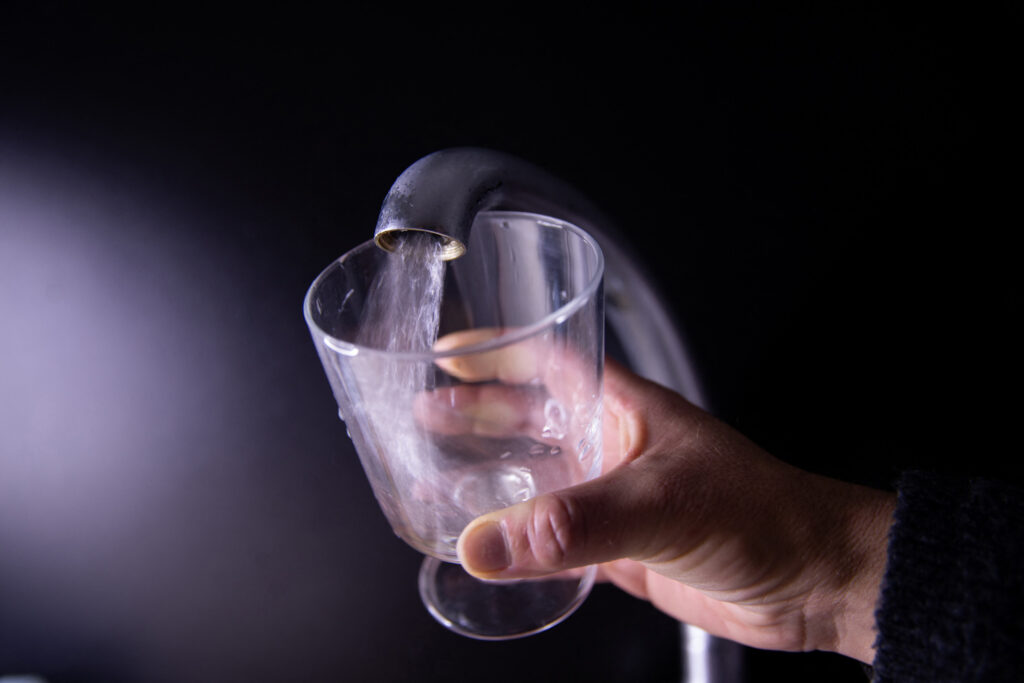Every four years, the American Society of Civil Engineers’ Report Card for America’s Infrastructure provides a comprehensive assessment of the state of the nation’s infrastructure. The results of the recently released 2025 report card were not where we want or need to be as a nation. Drinking water received a grade of C- and wastewater infrastructure a D+. Even more concerning, there’s been no change since the 2021 report card.
The ASCE data reflects the harsh reality faced by communities across the U.S.—public water systems are in desperate need of investment, repair, and modernization. Access to safe, clean, reliable, and affordable water is not a given for all Americans.
Last December, Baltimore’s water system—which serves 1.8 million people—showed elevated levels of legionella bacteria. This came on the heels of E. coli found in their water system in 2022 due to failing infrastructure. In Jackson, Miss., decades of water supply problems culminated with the 2022 failure of a major water treatment plant, leaving 160,000 people without potable water. And, 10 years later, work continues to remove lead pipes in Flint, Mich.
These examples made national headlines, but there are systems across the U.S. that have similar challenges that haven’t made the news—whether in dense urban spaces, sprawling suburbs, or rural communities.
No one wants to be the next front-page story. We need to take a hard look at the current state of our water system infrastructure. Our nation’s drinking water infrastructure system is made up of 2.2 million miles of underground pipes. According to the American Society of Engineers, because of the aging infrastructure, drinking water systems currently lose at least 6 billion gallons of treated water per day. That’s over 9,000 Olympic-size swimming pools. This amounts to 2.1 trillion gallons of water loss per year, at a cost of $7.6 billion annually.
U.S. water system owners currently spend a fraction of the $1 trillion we’ll need in the next 20 years to make necessary upgrades. This doesn’t account for the impact of extreme weather events like floods and droughts, which strain systems. And industry demands are only continuing to increase.
Large, regulated water companies aren’t the norm in the U.S. Unlike gas and electric utilities, most of which are regionalized, water systems are highly fragmented. There are more than 50,000 community water systems. The majority of these serve less than 10,000 people—and more than half serve fewer than 500 people.
The small scale and fragmentation of these systems is inefficient, creating steep challenges for communities that have limited access to capital due to small customer bases. Decade after decade, needed upgrades are often unmade, creating a cycle of underinvestment that typically comes to a head when systems fail to meet drinking water standards or face major, costly upgrades or repairs that can no longer be kicked down the road.
The solution will require both the public and private sectors to come together, and leveraging private capital is a key component. Yet the idea of infusing private capital is sometimes met with resistance. Perhaps it is a fear of loss of local oversight or a revenue stream, but the reality is that larger, regulated utility companies bring experience, expertise, and private capital that many small systems simply don’t have. These companies are solutions providers, helping communities solve water and wastewater challenges, such as PFAS, lead and copper, and other critical issues that arise from underinvestment and deferred maintenance, and they do so at economies of scale, spreading investment across a much larger customer base.
American Water plans to invest $40-$42 billion across our water and wastewater systems over the next 10 years. Economic impact studies show that for every $1 million invested in water infrastructure, upwards of 15 jobs are generated throughout local economies. For cash-tight communities, the long-term economic impact is consequential. Less money being used to replace aging infrastructure means more money for fixing roads, supporting pension funds, and stabilizing local taxes.
To achieve the goal of safe, clean, reliable, and affordable water for every American, partnering with the federal, state, and local governments, along with other stakeholders, is key. Enacting constructive policies drives additional investment in critical systems. Proposed legislation, supported by the water industry, such as the Water Systems PFAS Liability Protection Act, would allow water utilities to prioritize maintaining water quality over defending against polluters’ liability disputes.
Support of the Low-Income Household Water Assistance Program (LIHWAP) would help ensure affordable access to safe drinking water while helping to provide all water utilities with much-needed revenue to repair and modernize infrastructure. Legislation is needed to ensure that all wastewater utilities have access to Clean Water State Revolving Fund dollars, allowing all utilities to apply for low-cost financing for wastewater infrastructure projects—and passing the savings on to customers.
The solution is an “and” not “or” approach that requires the public and private sectors to work together. Public-private cooperation and partnership reap bigger benefits as well. We can safeguard human health, incentivize economic investment, and ultimately create American jobs. Working together, we can preserve and enhance our most precious resource for generations to come.
John Griffith is the president of American Water.
The views expressed in this article are the writer’s own.
Read the full article here
